Politics
China’s Xi slams ‘bullying’ behaviour in world order as SCO nations gather
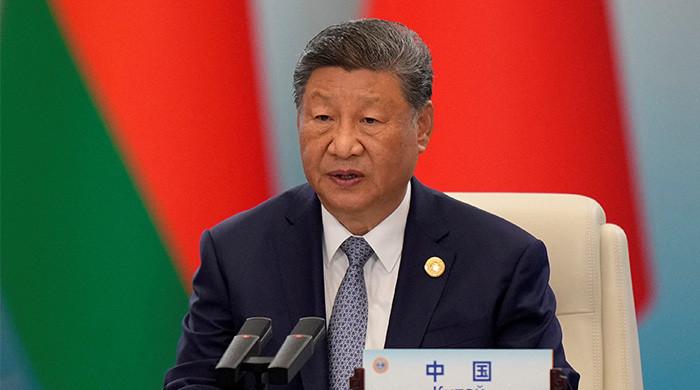
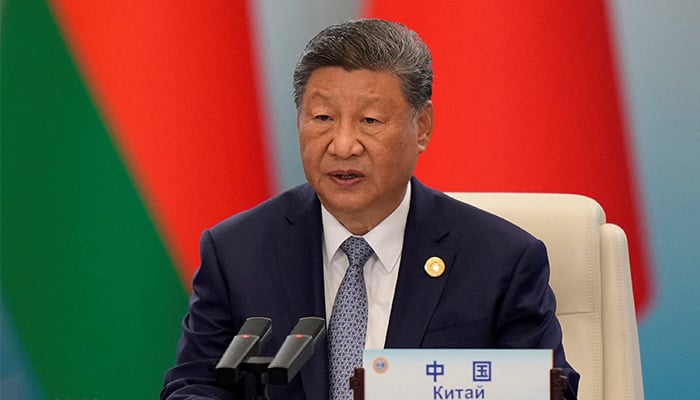
- PM Shehbaz, Russia’s Putin, Indian PM Modi and other leaders attend session.
- Xi speaks about constructive participation in int’l affairs, opposes hegemonism.
- SCO has set a model for a new type of international relations: President Xi.
Chinese President Xi Jinping criticised on Monday “bullying behaviour” in the world order as he gathered regional leaders for a summit.
He called on the leaders — including Prime Minister Shehbaz Sharif, Russia’s Vladimir Putin and India’s Narendra Modi — to “adhere to fairness and justice… oppose Cold War mentality, camp confrontation, and bullying behaviour”, in a speech in the northern city of Tianjin.
The Shanghai Cooperation Organisation, which is gathering for a two-day summit, comprises China, Pakistan, India, Russia, Iran, Kazakhstan, Kyrgyzstan, Tajikistan, Uzbekistan and Belarus — with 16 more countries affiliated as observers or “dialogue partners”.
China and Russia have sometimes touted the SCO as an alternative to the NATO military alliance.
“The current international situation is becoming chaotic and intertwined,” Xi told the leaders.
“The security and development tasks facing member states have become even more challenging,” he added.
“Looking back, despite tumultuous times, we have achieved success by practicing the Shanghai spirit,” he said, referring to the name of the group.
“Looking to the future, with the world undergoing turbulence and transformation, we must continue to follow the Shanghai spirit, keep our feet on the ground, forge ahead, and better perform the functions of the organisation.”
Xi said China will work with all parties in the SCO to take the regional security forum to a new level, as he unveiled his ambition for a new global security order that poses a challenge to the United States.
The SCO has set a model for a new type of international relations, Xi said in opening remarks at the summit, adding that the forum unequivocally opposed external interference.
Xi spoke also about constructive participation in international affairs, opposing hegemonism and power politics, as well as promoting multilateralism in his remarks.
The security-focused bloc, which began as a group of six Eurasian nations, has expanded to 10 permanent members and 16 dialogue and observer countries in recent years.
United Nations Secretary-General Antonio Guterres said China played a “fundamental” role in upholding global multilateralism on Sunday.
Analysts say China will use this year’s largest-ever summit to demonstrate an alternative vision of global governance to the American-led international order at a time of erratic policymaking, a U.S. retreat from multilateral organisations and geopolitical flux.
Beijing has also used the summit as an opportunity to mend ties with New Delhi.
Modi, who is in China on his first visit in seven years, and Xi both agreed on Sunday their countries are development partners, not rivals, and discussed ways to improve trade ties amid the global tariff uncertainty.
Politics
Air India 777 aircraft turns back after drop in engine oil pressure, says regulator


- Pilots shut down engine, aircraft lands safely in Delhi.
- DGCA orders probe into Air India Boeing 777 incident.
- Engine oil pressure drops to zero after take-off: DGCA.
BENGALURU: An Air India Boeing 777 aircraft had to turn back after a drop in oil pressure forced the pilots to turn off one of the jet’s engines, India’s aviation regulator said on Monday.
The aircraft, which was headed to India’s financial capital of Mumbai, landed safely back in Delhi and the incident will be investigated, the Directorate General of Civil Aviation (DGCA) said in a statement. Modern aircraft are designed to safely fly and land on a single engine, if required.
Air India has been under intense scrutiny this year after the June 12 crash of a Boeing Dreamliner killed 260 people. The DGCA has flagged multiple safety lapses at the airline, which was previously owned by the government till 2022.
An Air India investigation into why one of its planes conducted commercial flights without an airworthiness permit found “systemic failures”, with the airline admitting it needed to do better on compliance, Reuters reported earlier this month.
On Monday, pilots observed a low engine oil pressure on the B777-300ER aircraft’s right-hand engine during flaps retraction after take-off. The pressure shortly thereafter dropped to zero, and the crew shut down the engine and turned back as per procedure, the DGCA said.
“Air India sincerely regrets the inconvenience caused due to this unforeseen situation. The aircraft is undergoing the necessary checks,” an Air India spokesperson said in a statement.
The aircraft is 15 years old and has flown to locations such as Vienna, Vancouver and Chicago, according to Flightradar24. Boeing did not immediately respond to a request for comment on the incident.
Politics
New Zealand concludes free trade agreement with India
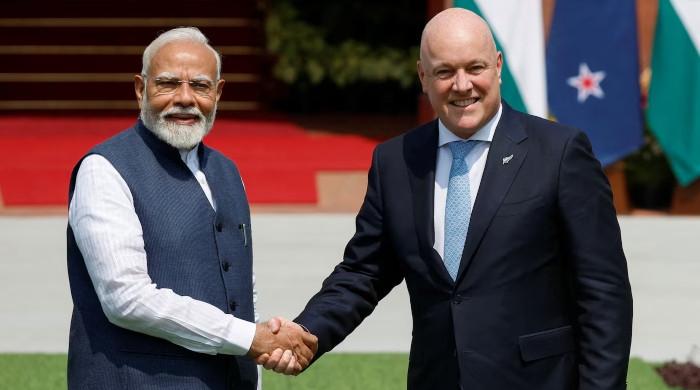

- Over half of products duty-free from day one.
- New Zealand to offer 1,667 temporary work visas annually.
- Extra 1,000 working-holiday visas each year.
New Zealand and India struck a free trade agreement, both governments said on Monday, making it easier for New Zealand’s exporters to reach the world’s biggest population and an economy forecast to be worth NZ$12 trillion ($7 trillion) by 2030.
The agreement eliminates or reduces tariffs on 95% of New Zealand’s exports to India with more than half of products to be duty free on day one of the pact, improving access to India’s rapidly expanding middle class, the New Zealand government said.
New Zealand would offer some 1,667 temporary work visas a year for people in areas where it has skills shortages, including doctors, nurses, teachers, technology professionals and engineers, and another 1,000 places a year in its working holiday visa program, matching Australia’s free trade pact with India.
“The gains are wide-ranging and significant,” said New Zealand Prime Minister Christopher Luxon.
“India is the world’s most populous country and is the fastest-growing big economy, and that creates opportunities for jobs for Kiwis, exports and growth,” he added.
The countries expect to sign the agreement in the first half of 2026, the New Zealand government said.
New Zealand’s trade minister, Todd McClay, said the deal put the country on an equal or better footing than other countries which traded with India and “will deliver thousands of jobs and billions in additional exports”.
The Indian government confirmed the pact without giving further detail. India’s trade minister was scheduled to speak with reporters later on Monday.
The deal makes good on a 2022 election promise from New Zealand’s governing National Party that if elected it would finalise a New Zealand-India free trade agreement in its first term.
But parliamentary approval was not immediately assured. New Zealand First, with which the Nationals have a coalition and which holds eight of the 123 seats, would vote against the deal, said NZ First leader Winston Peters.
The deal “gives too much away, especially on immigration, and does not get enough in return for New Zealanders, including on dairy”, Peters said.
Two-way trade between the two countries totalled NZ$3.14 billion in 2024, dominated by pharmaceuticals from India and forestry and agricultural products from New Zealand, including wool, logs and apples.
Politics
Bondi shooters conducted ‘tactical’ training in countryside: police


- Shooters recorded video detailing motivations for attack: police.
- Attackers made made nighttime “reconnaissance” trip to beach.
- Firearms training conducted in New South Wales countryside.
SYDNEY: Two suspects in last week’s deadly mass shooting at Australia’s Bondi Beach trained for the attack in the countryside, police alleged in court documents Monday, as Prime Minister Anthony Albanese vowed tougher laws against hate speech and extremism.
Father and son Sajid Akram and Naveed are accused of targeting a Hanukkah event on Bondi Beach, killing 15 people in the nation’s deadliest mass shooting in almost three decades.
Police documents released Monday said the two had carried out “firearms training” in what was believed to be the New South Wales countryside before the shooting.
Pictures were released showing the accused firing shotguns and moving in what authorities described as a “tactical manner”.
The pair also recorded a video in October railing against “Zionists” while sitting in front of a Daesh flag and detailing their motivations for the attack, police said.
And they made a nighttime “reconnaissance” trip to Bondi Beach just days before the killings, documents showed.

Australia observed a minute’s silence at 6:47pm (0747 GMT) on Sunday — exactly a week since the first reports of gunfire.
On Monday, Albanese said he would push for tough new laws creating “an aggravated offence for hate preaching”.
“We’re not going to let the Daesh-inspired terrorists win. We won’t let them divide our society, and we’ll get through this together,” Albanese told reporters.
“As PM, I feel the weight of responsibility for an atrocity that happened whilst I’m the PM, and I’m sorry for what the Jewish community and our nation as a whole has experienced,” he said.
“The government will work every day to protect Jewish Australians, to protect the fundamental right as Australians that they have to be proud of who they are, to practice their faith, to educate their children and to engage in Australian society in the fullest way possible,” he added.
Crackdown on guns, ‘terrorist symbols’
Australia’s federal government has flagged a suite of reforms to gun ownership and hate speech laws, as well as a review of police and intelligence services.
Albanese also announced last week a sweeping buyback scheme to “get guns off our streets”.
It is the largest gun buyback since 1996, when Australia cracked down on firearms in the wake of a mass shooting that killed 35 people at Port Arthur.
And the government of New South Wales — where the shooting took place — recalled its parliament for two days on Monday to introduce what it called the “toughest firearm reforms in the country”.
“We can’t pretend that the world is the same as it was before that terrorist incident on Sunday,” New South Wales Premier Chris Minns told reporters.
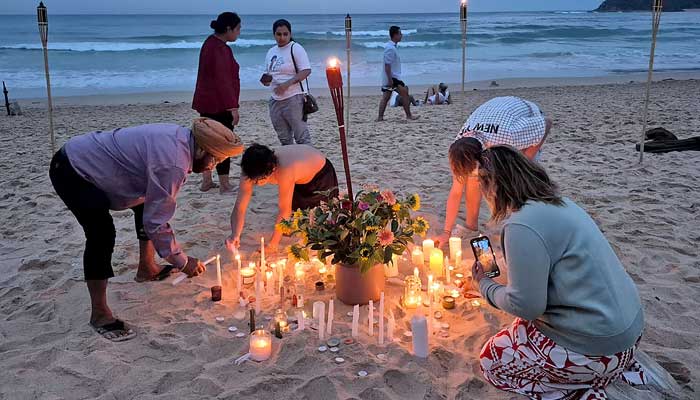
“I’d give anything to go back a week, a month, two years, to ensure that didn’t happen, but we need to make sure that we take steps so that it never happens again.”
The new rules will cap the number of guns an individual can own to four, or ten for exempted individuals like farmers.
There are more than 1.1 million firearms in the state, officials said.
The legislation would also ban the display of “terrorist symbols”, including the flag of Daesh, which was found in a car linked to one of the alleged shooters.
Authorities will also be able to prohibit protests for up to three months following a terrorism incident.
One of the alleged gunmen, Sajid Akram, 50, was shot and killed by police during the attack. An Indian national, he entered Australia on a visa in 1998.
His 24-year-old son Naveed, an Australian-born citizen, was moved from hospital to jail on Monday, police said.
Minns said Monday he would also look into stricter hate speech legislation next year, including restrictions on the phrase “globalise the intifada”.
-

 Business1 week ago
Business1 week agoHitting The ‘High Notes’ In Ties: Nepal Set To Lift Ban On Indian Bills Above ₹100
-

 Business7 days ago
Business7 days agoStudying Abroad Is Costly, But Not Impossible: Experts On Smarter Financial Planning
-

 Business1 week ago
Business1 week agoKSE-100 index gains 876 points amid cut in policy rate | The Express Tribune
-

 Sports7 days ago
Sports7 days agoJets defensive lineman rips NFL officials after ejection vs Jaguars
-

 Tech1 week ago
Tech1 week agoFor the First Time, AI Analyzes Language as Well as a Human Expert
-

 Entertainment7 days ago
Entertainment7 days agoPrince Harry, Meghan Markle’s 2025 Christmas card: A shift in strategy
-
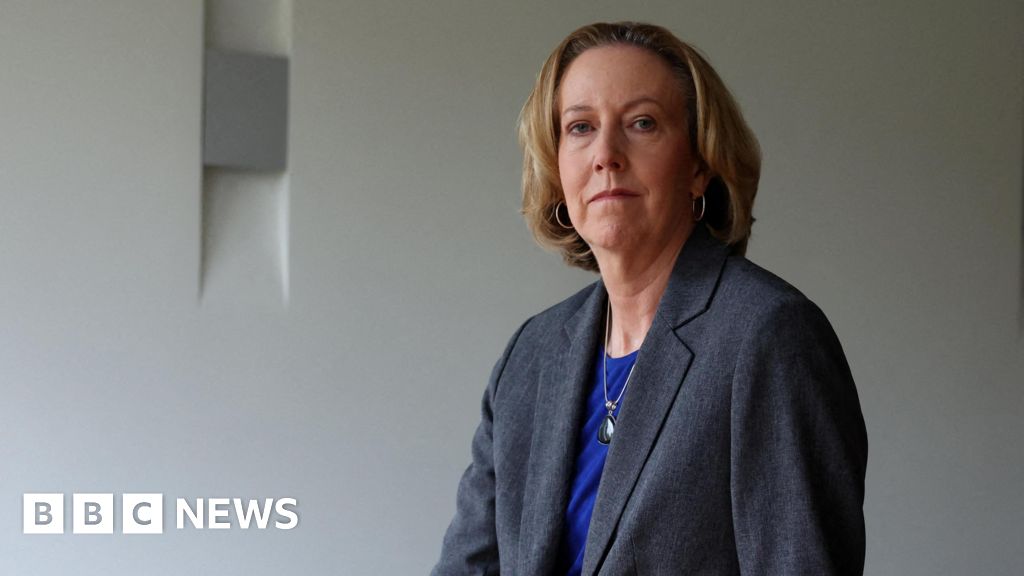
 Business4 days ago
Business4 days agoBP names new boss as current CEO leaves after less than two years
-

 Fashion4 days ago
Fashion4 days agoIndonesia’s thrift surge fuels waste and textile industry woes






